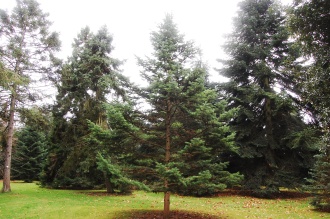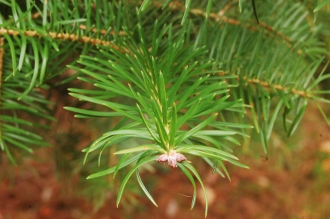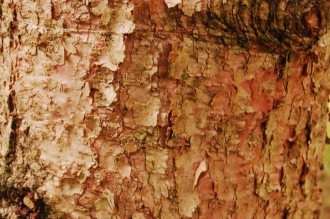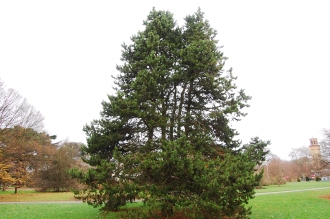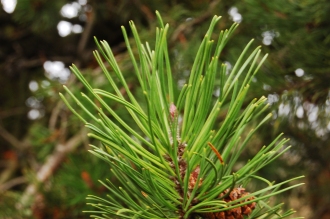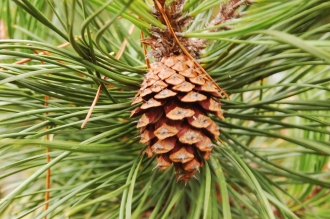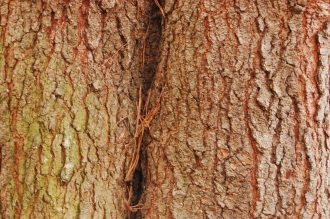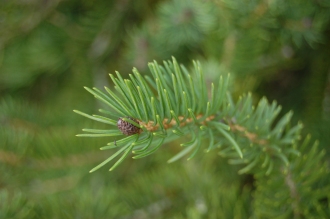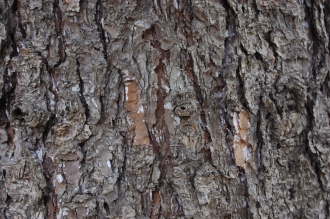Position: Full sun to light shade
Flowering period: Spring
Soil: Moist, well drained
Eventual Height: 30m
Eventual Spread: 10m
Hardiness: 4a, 4b, 5a, 5b, 6a, 6b, 7a, 7b, 8a, 8b
Family: Pinaceae
Abies holophylla is an evergreen coniferous tree with a conical habit. Its glossy mid green leaves are needle like and flattened, up to 4cm long and 2.5mm broad. Its trunk may achieve a diameter of up to 1m and its grey/ brown bark is scaly. Its male flowers are pale yellow pollen cones. Its fruit are upright cones, up to 14cm long, 5cm across, green when young, maturing to light brown.
Abies holophylla, commonly known as Manchurian Fir or Needle Fir, is native to north east China, south east Russia and north Korea. In its native habitat it grows in in mixed mountain woodlands.
The etymological root of the binomial name Abies is derived from the ancient Latin name for the Fir tree. Holophylla is derived from the Greek olos meaning ‘entire’ and and phyllon meaning ‘leaf’.
The landscape architect may find Abies holophylla useful as an attractive ornamental evergreen tree suitable for parkland settings.
Ecologically, Abies holophylla seeds are attractive to some birds.
Abies holophylla prefers moist, fertile, well-drained soils. It tolerates most pH of soil. It dislikes dry soils.
Abies holophylla requires little maintenance.
![]()
Landscape Architecture
